This autumn is shaping up to be one of reviews. Network Rail Chairman Sir Peter Hendy has examined the company, and so is Non-Executive Director Dame Colette Bowe. But the most far-reaching of all seems set to be that conducted by High Speed 1 Chief Executive Nicola Shaw - with responses to a series of fundamental questions being sought ahead of the final publication of her report next year.
The Shaw Report is arguably more important than the others because it seeks to identify how Network Rail should change to better meet the demands of its passenger and freight train operating customers - and how it should be funded in the future. The scoping document - in very simple terms a list of questions about NR and the best way forward - was released on November 12. Responses must be submitted by December 24.
It goes into considerable depth on the structure of the railway and its importance to the country. This may seem rather a statement of the obvious to close observers of the industry, but this exposition of the current situation is vital to ensure that anyone who wishes to respond has as complete a picture of Network Rail and Britain’s railways as possible.
Perhaps the most important point the report makes is that Britain’s railways are growing. As Shaw points out, since the mid-1990s growth in rail travel has exceeded all other transport modes, with the number of passenger journeys rising by 57% in the last decade alone. There have also been major increases in freight traffic.
This growth has been backed by a continuous improvement in safety, following the October 2000 derailment at Hatfield that ultimately led to the demise of NR’s predecessor Railtrack. Britain’s railway is, by most measures, the safest in Europe.
And the railway is improving, too - a 2013 study by the European Commission rated Britain’s railways as the most improved in Europe since the 1990s. Given the issues being examined by the various reviews, this is a vital point to make: Britain’s railway may not be perfect and changes are needed, but broadly speaking, it is delivering what it sets out to.
Shaw’s view of opportunities and challenges is that network capacity is becoming an increasingly pressing issue. Catering for expected growth is, in Shaw’s words, “a significant challenge”.
Easing these capacity issues will not be easy, but Shaw recognises the potential of widespread use of European Rail Traffic Management System (ERTMS) signalling. A well-planned European Train Control System (ETCS, the signalling aspect of ERTMS) Level 2 installation can boost capacity by around 20%, while installing the moving block Level 3 variant could increase that figure further.
High Speed 2 will have a significant effect, by releasing capacity on the conventional network and providing new and more attractive services. The expectation is that HS2 Ltd will become the infrastructure manager for the route when it opens. There will be major challenges in ensuring operational and planning interfaces between HS2 and NR work effectively.
The role of government is also vital - it owns and funds NR, and provides subsidy for some train operating companies. Shaw makes it clear that governmental involvement is the norm in Europe, to protect unprofitable but socially necessary services and to protect customers’ interests through intervention and regulation. Wider economic benefits claimed by government involvement in railways include regulated fares, reduced congestion on the roads, providing a way for people to get to work, and linking businesses.
Network Rail was set up in 2002 as a company limited by guarantee, but in September 2014 was reclassified as a public body. Shaw says the impact of this decision has been:
- To reduce NR’s financial flexibility.
- NR faces greater scrutiny on financial and operational performance and pay, as well as incurring increased reporting requirements.
- NR has had to adjust to “complex and multi-faceted relationships” with different government departments and Parliament.
- There has been a greater focus on non-core commercial activities and assets for “potential monetisation”.
The company’s problems in Control Period 5 (CP5, April 2014 to March 2019) have been well documented, with costs for projects such as the Great Western Main Line electrification soaring and delays accruing. Shaw says reclassification of NR has made it much more difficult for the company to alter spending plans in response to higher costs.
The July budget revealed plans to channel more public money through train operators rather than directly to NR, as well as calling for it to devolve responsibilities to routes and establish a dedicated body to focus on realising value from land and property on the rail network.
All of this is happening at a time of intense potential change in policy. The Periodic Review for CP6 (2019-2024) is in its early stages; there are 11 franchises due to be awarded by 2020; and the Office of Rail and Road (ORR) is consulting on regulation of NR in CP6 and about a specification for a system operator for the rail network.
And there’s more: the Competition and Markets Authority is investigating increased on-rail competition; more transport powers could be devolved to Scotland, Wales and the English regions; the new National Infrastructure Commission could have an effect; and finally there is the European Union’s Fourth Railway Package, which will also have an impact on Britain’s railway.
Network Rail has a massive range of responsibilities - from operation, maintenance, renewals and enhancement of the network to planning and timetabling services, property, security and station management.
Shaw suggests that many of these functions were included within the infrastructure operator at privatisation “sometimes simply because there was nowhere more obvious to put them”. Her first question is therefore a logical starting point: “What are your views on the scope of NR’s functions?” with a follow-up asking if the report omits any specific and important factors.
At present NR operates seven geographical routes with a national function for freight operators. Central support covers functions such as human resources, safety, network strategy, property and legal aspects. The company intends to devolve a range of functions to the routes, with this process under way.
Looking beyond these plans, Shaw suggests that alternative approaches of “disaggregating” the network could be considered. Options mooted include on the basis of political or economic geographies, or by service type (inter-city, regional or commuter).
The team conducting the Shaw Report says it wants to establish whether there is a case for changing from the current route-based structure, and what the potential advantages and disadvantages of that might be.
However, devolution carries risks. It could (says the report) have the potential to fragment and complicate co-ordination, and create additional interfaces that reduce economies of scale in certain areas.
The alliance approach adopted by NR in Scotland (for the Paisley Canal line electrification) and in Wessex (with South West Trains) has led to some benefits, and although the arrangement in Wessex ended earlier than expected, considerable thought is being given to how incentives for train operator and infrastructure provider can be aligned. Shaw seeks views on the advantages and disadvantages of changing the current route structure and what other solutions might offer.
Her scoping document also asks whether the current balance of responsibilities between routes and central functions are appropriate, what responsibilities could be devolved or centralised, and what economies of scale should be protected at a national level. It also asks what capabilities need to be in place to support the current devolved structure, and what the impact would be on respondents’ organisations if NR’s structure changed.
NR accountability was initially to stakeholders, but this has changed since its reclassification as a public body. Effectively, NR is now accountable to the Government, the ORR, taxpayers, other funders and customers.
The Department for Transport has oversight of NR, and monitors its performance. Transport Focus, the Rail Delivery Group and the Rail Safety and Standards Board also provide oversight. Shaw seeks views on their arrangements and effectiveness.
With no shareholders as such to hold its board accountable, NR’s incentives to deliver its promises are financial and reputational, according to Shaw. She cites operational performance regimes with operators, fines from the ORR (although as Shaw acknowledges, now that NR is in public ownership this is effectively a fine on the taxpayer) and penalties for overspending. Its reputational incentives are based on public reporting to the ORR and by the ORR, enforcement orders, reporting to government, media coverage, and the ability of the board of directors and chairman to remove the chief executive and that of the Secretary of State to remove the chairman.
Shaw asks three key questions on this aspect:
- How effectively are customer needs and expectations met by NR?
- Should direct customer pressure on NR be strengthened, and if so how should it be achieved?
- Are there more positive incentives for delivery that would be useful? Are any of these incentives more effective than others?
There are currently £18.3 billion of enhancements planned on the network for the next ten years, with two-thirds of those projects expected to cost under £100 million. Electrification accounts for a third of the investment. Shaw seeks views on the current planning process for enhancements, and suggests that the current process is “far from perfect”. Key issues identified are:
- Role definition.
- Political involvement.
- NR’s ability to work with the supply chain.
- Capacity and technical ability within different organisations.
- Risk and reward.
NR is criticised for being “an unresponsive contractor unwilling to make alterations to projects even on an emerging cost basis”. Shaw argues that this has a knock-on effect on suppliers’ staffing, training and resource decisions that filters through the supply chain, sometimes with wider industry implications.
The Bowe Review is set to recommend changes to the planning process, and the Shaw Report team says it will build on the findings. Shaw asks respondents what are NR’s strengths and weaknesses in planning and delivering enhancements, how well the current planning and delivery processes work for projects of different sizes, and whether there are useful models or precedents from other industries or countries that should be considered.
The implication is that change needs to happen - the report points out that there have been “many different management teams” trying to make NR (and before it Railtrack) work. Enforcement by the ORR (on 43 occasions) and “numerous internal reorganisations… suggest that management changes alone are not sufficient to resolve the planning and process issues on which industry is agreed”.
The report team plans to develop a range of options, from wholesale structural reform to smaller changes that could be slotted together in a variety of formulations. It asks what the most important structural features for any future infrastructure provider should be, how the relationship between the periodic review process and others could be improved, and what criteria should be used to assess structural options under consideration and how they should be prioritised.
The ORR determines NR’s revenue requirement for each Control Period, and this covers most of the company’s expenditure. However, some borrowing is required for enhancement projects. NR receives a direct government grant of £3.4bn, with train operators paying £2.4bn.
Changes to the way NR is funded will affect the flow of money, and potentially the amount. If track access charges change, Shaw asks whether train operators should be “held harmless” from them in the future - a vital consideration if more money is channelled through them.
At the core of NR’s funding is the Regulatory Asset Base (RAB) on which its borrowing was based. Shaw says that while the Government always had a role in funding the company, since NR’s reclassification in 2014 the whole of NR’s finances now “directly affect the Government’s fiscal objectives”.
Before reclassification NR could borrow against the RAB up to a limit of 75% of its value, giving it a degree of flexibility on enhancement projects. It now has a £30bn financing facility with the Government but a small buffer of £1.8bn, which has (according to Shaw) changed NR’s approach - from one focused on outputs and project delivery, to a system that focuses on level of expenditure and borrowing with a fixed limit on borrowing and a more limited risk buffer.
Since reclassification, Shaw argues that the purpose of the RAB is less clear as it no longer provides a risk buffer, and that the Government faces the whole cost of capital expenditure at the point it is spent. Against that, she says that the RAB is a well-understood regulatory concept to provide a guaranteed and stable return to investors (something that may be useful in the future), and that it focuses the company’s attention on financial responsibility.
Should NR remain in the public sector, however, other methods may prove more transparent and accountable, says Shaw. She asks whether the RAB remains relevant - and if not what should replace it - and (crucially) how financial risk should be managed in Britain’s rail infrastructure.
The report outlines a range of potential funding options, from full privatisation to full public ownership and a range of possibilities between those two extremes (see diagram, right).
The report team acknowledges that rules on public sector classification are complex and that certain funding options could have “diverse impacts” on public sector borrowing. It also adds that implementing certain options in a public sector setting could be challenging, because of rules and policies regarding the management of public funds.
Potential funding options include:
- Full or partial privatisation.
- Debt capital market issuance at the parent company level.
- Monetisation of non-core assets.
- Sale or other contractual arrangements on parts of the infrastructure.
- Part funding from local or devolved governments.
- Joint venture and other types of partnerships.
- Levies where businesses contribute to the cost of infrastructure.
Shaw says there are “significant pockets of demand for attractive infrastructure stories”, but warns that potential investors may need reassurance over long-term political support for the railway, robust cost estimate processes, greater visibility on the income stream over and above the Government’s support, a “tighter focus” on core activities, and a potential restructuring of the capital structure in support of a robust credit profile.
Better alignment of incentives in the industry and “stretching yet realistic” regulatory targets may also be required. The report acknowledges that some projects will continue to require some government funding, but that this could take alternative forms such as grant funding through train operators. Where there is a clearer commercial benefit, one suggestion is that other organisations which benefit could be bought in to bear part of the cost.
Shaw asks a range of questions on NR funding, asking how it should be achieved, and the types of investors who might be interested in investing in NR and their approaches. She also asks for examples in the wider rail sector and elsewhere of more affordable and sustainable funding and financing (with or without private sector capital input), what characteristics enhancements projects would need to attract private sector investment, and what ‘incentive mechanics’ or control structures on NR would draw in third-party involvement in financing enhancement projects.
Any changes to Network Rail’s structure and funding introduce a level of risk. Shaw acknowledges this, emphasising that any recommendations have to work from a whole systems perspective, “otherwise fixing an issue specific to NR may import risk into the wider railway system. In a safety-critical industry this point is key.”
She also argues that short-term and long-term risks need to be balanced, and that concern over the future creates uncertainty. She says there is a need to find the right balance between efficiency and flexibility, to adapt to new challenges but also optimise activities and operate efficiently.
It is impossible to draw conclusions from this scoping document - other than in the questions posed and the initial analysis, Shaw argues a compelling case that changes to NR need to be considered seriously and carefully.
Any move towards privatisation is likely to prove controversial - memories of Railtrack’s failure loom large. Equally, however, retaining NR in the public sector presents complex challenges in terms of accountability, funding and long-term planning.
Shaw’s recommendations are due in early 2016, and could shape the future of Britain’s rail industry for a generation. They will need to be very carefully considered.
- This feature was published in RAIL 790 on December 23 2015

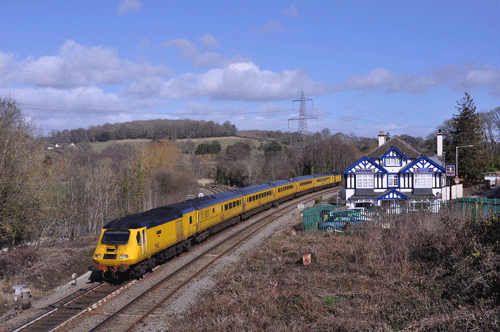
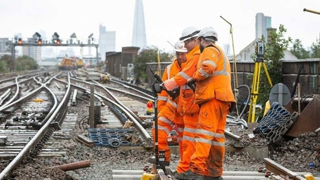
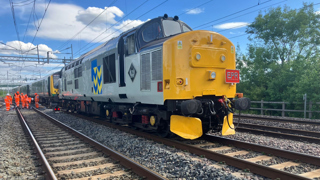
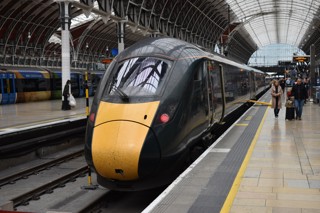
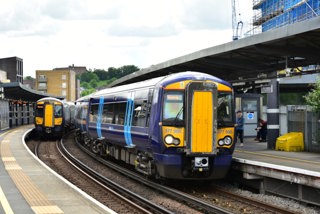
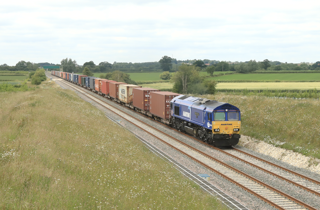










Login to comment
Comments
No comments have been made yet.